Before we begin…
Here’s a picture. Can you make it tell a story? For more on this challenge, scroll down now or, just take your time and read your way there while ideas percolate in your brain.
Welcome! You’ve reached Spark. Learn more here or just read on. If you received this from a friend, please join us by subscribing. It’s free! All you have to do is press the button below. If you have already subscribed, welcome back! If you see something you like, please hit that heart so others can find us more easily.
Rediscovering The Power of Words and Pictures
This month, I finally read my first graphic novel. Then I read a comic book. Then I read my first two graphic memoirs and just started a third. Now I am wondering about why on earth I resisted all of them in the first place.
I think comics had something to do with it. Comics infuriated me when I was young. I’d pick up an Archie (yes Archie) or a Superman comic and read it right up to the cliffhanger on the final page. Then, when I went searching for the issue that would explain what happened next, I’d never find it. I was a child who prized continuity. hated references to characters that had been introduced previously or events that changed everything. It felt like being left out in the cold.
Perhaps, too, I adopted a bit of the snobbism described by Nia Carnelio in her essay, “Are Comic Books Literature? Should They Be?” I confess that I associated books told with words and pictures with children but I agree with Carnelio that plenty of children’s books have meaning and depth.
A deeper truth is that my brain struggles when it is presented with both words and pictures on a page.
A deeper truth is that my brain struggles when it is presented with both words and pictures on a page. I chase the words with only a glance for the pictures. They are not easy for me to process when I am taking in a story, trying to follow it. They distract me. Sometimes the level of detail is overwhelming. Sometimes I struggle with the order of the frames, going down when I should go left to right or vice versa. I feel frustrated, left out of the story. On top of that, I’ve always liked the pictures that form in my mind when I read; the pictures on the page felt intrusive.
I learned something when I finally decided to invest a little time in reading works composed in words and pictures: I read too fast. Stories told with words and pictures can appear to be deceptively simple but they are not necessarily meant to be easy. Yes, the story is stripped of extraneous description, verbal transitions, or clever metaphors but that seems to make the heart of the story more palpable, more visible, more real.
Something beautiful happened…
Something beautiful happened when I paused and took in each frame, each page as a whole. I felt myself sinking deeper into the narrative. I imagined the author or the artist making each pen stroke, each brushstroke. What to leave in? What to leave out? I imagined the doodling that launched the story, the few lines that may have help the author arrive at the right words.
I used to doodle like that. I used to draw pictures and play with sketches. Twenty years ago, I scribbled a series of sketches that captured a few days in Rome in winter. I tried to find them a little while ago but they have disappeared. I still remember though, how one look at a sketch of us emerging from the underground at the Spanish Steps or instantly put me back in the moment. Words seemed beside the point. The sketch wasn’t art but it was, in its own way, story.
Somewhere along the line, I put drawings in one spare, small compartment of my mind and words in a far bigger, more luxurious compartment. But I think they were getting tired of their separation. After all, both words and pictures start with scribbling of one kind or another. They are both driven by the need to create, invite, share, or, as Carol Shields put it “to startle and illuminate.”
Graphic memoirs may work better for me
The big surprise? Memoirs made of words and pictures pull me in quicker and hold me faster than most memoirs I can remember reading.
Some are brief as in the Op-Ed “I Had a Choice” by cartoonist Marian Henley which appeared in the July 15 Washington Post. It tells the story of her rape and subsequent abortion and ends with this chilling frame that made me want to cry.
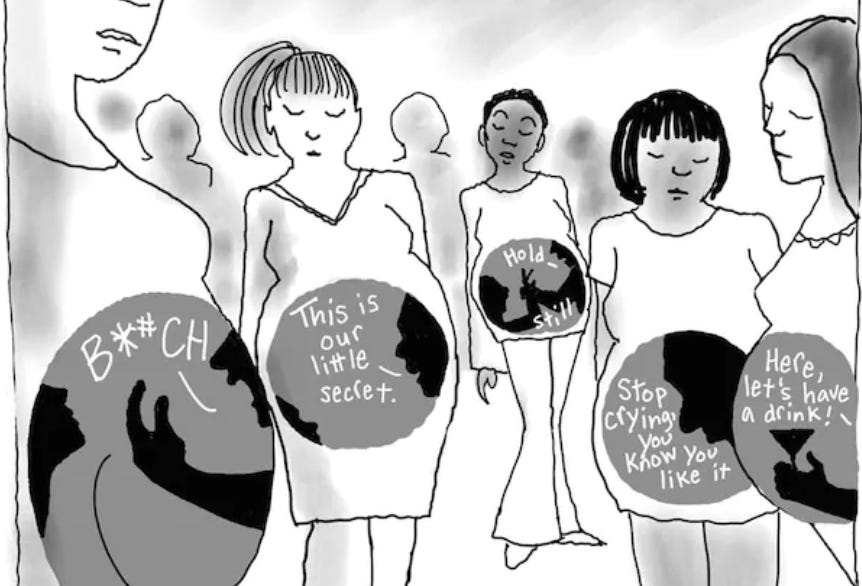
Others are full-length books
Maus: A Survivor’s Tale by Art Spiegelman
Maus chronicles Spiegelman’s effort to learn his father’s story as a Holocaust survivor. This two-book series has, inexplicably, been banned by some schools. My introduction to the Holocaust came in newsreels still available in the 1960s and shown in grade schools and high schools. The nuns who taught me from first to fourth grade made sure we knew of it and later, in rural New Hampshire of the 70s, teachers included it in what was called “social studies” classes. What was missing was something like this: a story that brings a reader deeply inside an individual’s story, a family, and how the experience of survivors shape the lives of their children years later. There are no heroes, no redemption stories, just people being people in situations that rob them of their humanity. I don’t know what we would have made then of seeing characters with animal faces – mice for Jews, cats for Germans, pigs for Poles, dogs for Americans – but the impact of the cartoons as I read through each book was visceral.
Nothing stood in the way of the story itself or the way in which the story informed Spiegelman’s own life. I appreciated this February 2022 interview with Spiegelman on NPR’s Fresh Air and I am sad that MetaMaus - a comprehensive book that shows all Spiegelman did to create his books and answers almost every question ever put to him (he says) - is no longer available except to collectors.
Embroideries by Marjane Satrapi
Embroideries is not so much a memoir as a little window into what a group of Iranian women who have known each other for a long time talk about when they gather without men. As with Maus, the creator is related to the women. She is an eavesdropper and sometimes a participant in the conversation that ranges from sex, to marriage, to the restoration of virginity (embroidery). It’s funny at times, poignant at others. Even women who grew up quite differently will recognize themselves or women they have known.
Can’t We Talk About Something More Pleasant: A Memoir by Roz Chast
I have just started reading this beautiful book even though it’s been on my TBR list since it came out in 2014. I’m three chapters in and already I recognize the dilemmas facing the well-known writer, the cartoonist Roz Chast, as she describes her aging parents in light of their past relationships and the limits closing in on them. This reads more like an actual illustrated memoir. It’s more leisurely and yet concise. There is room to absorb both the written descriptions of her parents…
“He was bad at opening packages, like cookies or cereal. You could tell which ones he’d tried to open because they were always torn in some strange way, as if a raccoon had tried to get into them.” - Can’t We Talk About Something More Pleasant: A Memoir?” by Roz Chast
And to sit with the imagery in the illustration of “The Wheel of Doom,” a schematic of “the cautionary tales of her childhood.”
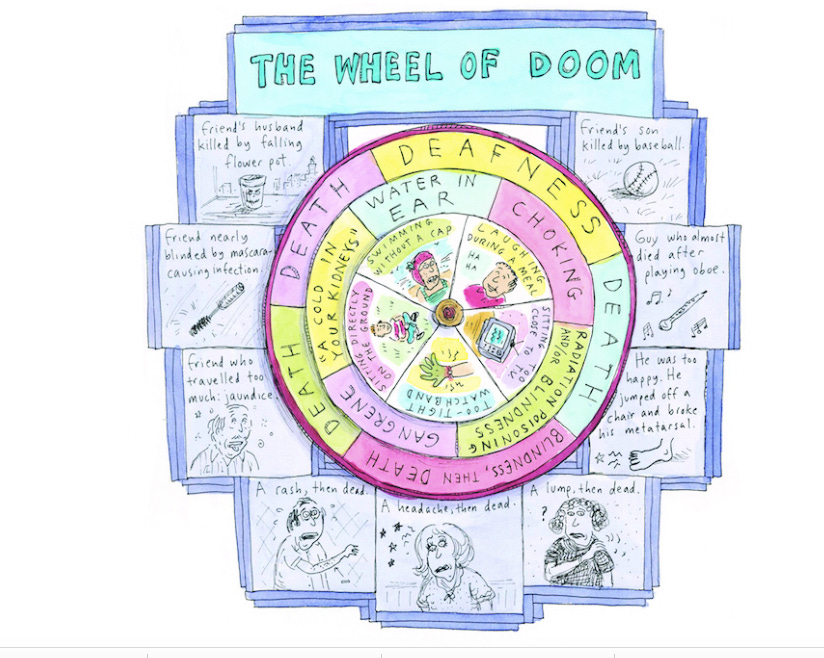
The Comics: Monster Girl and the Dream King Who Wanted His Job Back
Other books read so far in my exploration of graphic novels and comics are ND Stevenson’s Nimona and Niel Gaiman’s Sandman, both from this list of 10 Nia Carnelio’s Medium article 10 Graphic Novels and Comic Books You Need to Read ASAP.
I loved Nimona - This YA novel is dedicated to “all the monster girls” by author ND Stevenson who based the novel on his successful webcomic published on Tumblr from 2012-2014. I never read the comic but loved this wild story of a shapeshifting girl with a love of chaos whose power and brokenness outweigh her ability to trust. I struggled a bit with the art in this one mainly because the monochromatic colors made some of the more involved frames difficult to follow. The humor, insights, and clever characters more than made up for this.
I’m less sure about Sandman - Preludes & Nocturnes - This is the first book in the series of Sandman stories written by Neil Gaiman with art and lettering provided by Sam Keith, Mike Dringenberg, and Malcom Jones III. It should be dedicated to insomniacs. No one gets a good night’s sleep in it and some of the horror elements within kept this reader awake for hours. Sandman bears a strong resemblance to Neil himself and Lucifer is a dead ringer for a young David Bowie. So that’s fun. I’m going to keep reading. I’m as interested in the comments Gaiman provides in these editions as he looks back on his work and how it evolved.
Words & Pictures: A Challenge
Back in April, I clicked into one of my favorite newsletters, The Flare by Chevanne, where she immediately challenged the writer in me with some art by Winta Assefa, a picture of the world inside what looks like a martini glass, a lone figure sitting outside it contemplating the universe.
I asked Winta to send a new prompt, just for you. Here it is again. Just start scribbling and see what words rise from this picture. And share your thoughts or stories here! I’ll share mine if you share yours.
For more about Winta and her art, see her Substack, follow her on Instagram or check her out on Medium. Or, if you prefer to doodle some words inspired by her world-in-a-martini glass that works too. Here’s that link again.
And if you are looking for more fun reads check these out
Alberta The Snail from Edith Zimmerman, one of the writers who pried my eyes open about words and pictures
Writer. Artist. What We Can Learn From Writers Who Are Both. Plus: A List of Writers Who Drew (Flannery O’Connor - Who knew?)
A front page look at how giddy San Diego is with the return of ComiCon this week
Our community is growing!
Welcome to each and every new person who has joined us. It’s thrilling to to find so many new folks on board each day. If you would like to check out past issues, here’s a quick link to the archives. Be sure to check out our Resources for Readers and Writers too. And help us spread the word by sharing Spark with your friends.
That’s it for this week. Let me know you are and what you’re reading. If there’s an idea, book, or question you’d like to see in an upcoming issue of Spark, let us know! Use the comment button below or just hit reply to this email and send your message directly.
And remember, If you like what you see or it resonates with you, please take a minute to click the heart ❤️ below or at the top of this newsletter - it helps more folks to find us!
P.S. And now, for your moment of Zen….how Courtney got her lizard
A drawing, a video, and the backstory behind this “aspirational self-portrait” from Judith Solberg of Doodle Dispatches
Calling for Your Contribution to “Moment of Zen”
What is YOUR moment of Zen? Send me your photos, a video, a drawing, a song, a poem, or anything with a visual that moved you, thrilled you, calmed you. Or just cracked you up. This feature is wide open for your own personal interpretation.
Come on, go through your photos, your memories or just keep your eyes and ears to the ground and then share. Send your photos/links, etc. to me by replying to this email or simply by sending to: elizabethmarro@substack.com. The main guidelines are probably already obvious: don’t hurt anyone -- don’t send anything that violates the privacy of someone you love or even someone you hate, don’t send anything divisive, or aimed at disparaging others. Our Zen moments are to help us connect, to bond, to learn, to wonder, to share -- to escape the world for a little bit and return refreshed.
I can’t wait to see what you send!




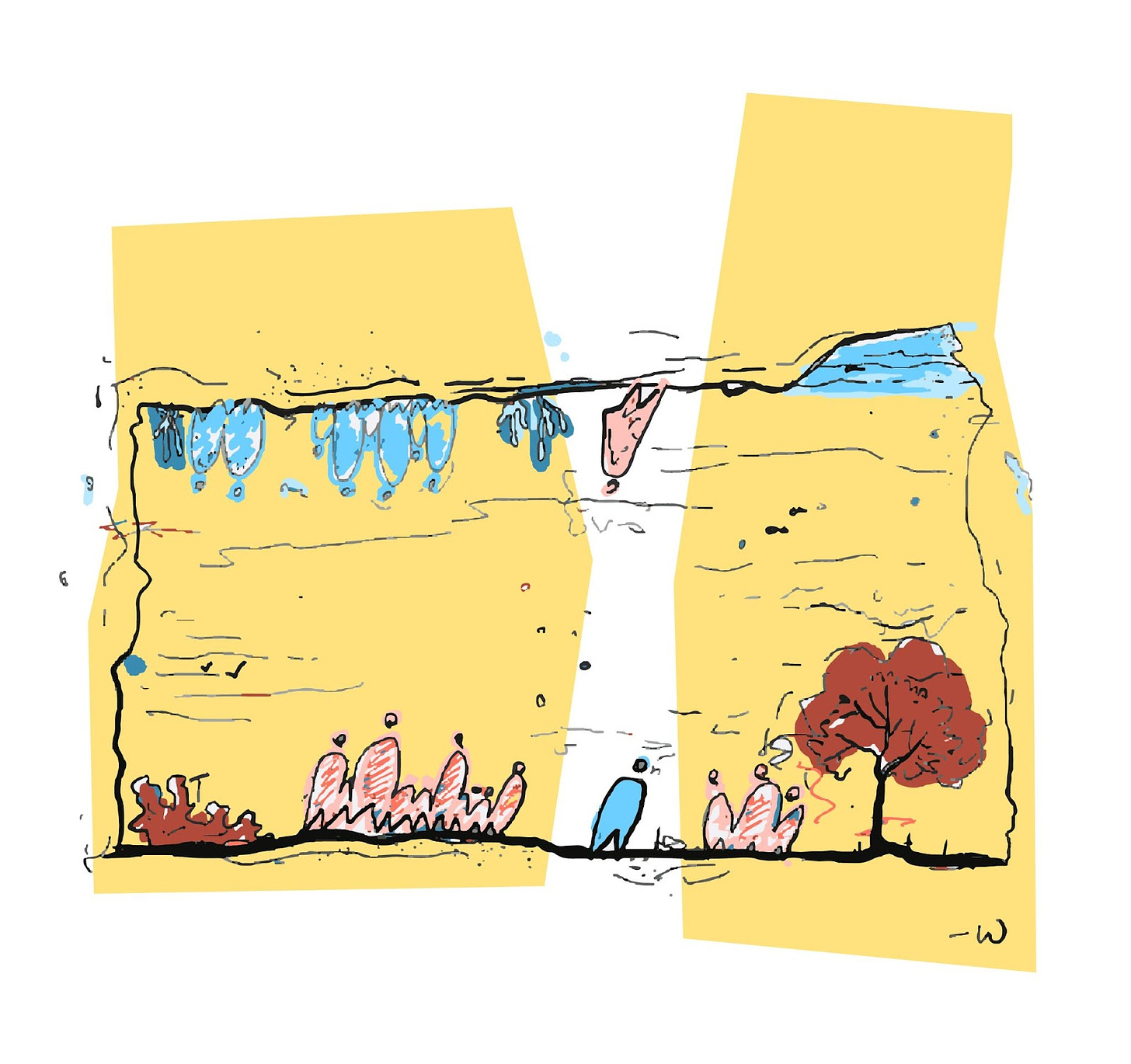
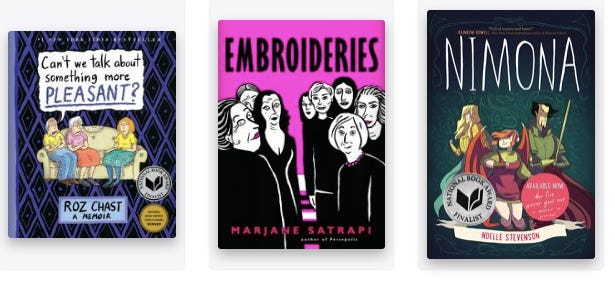
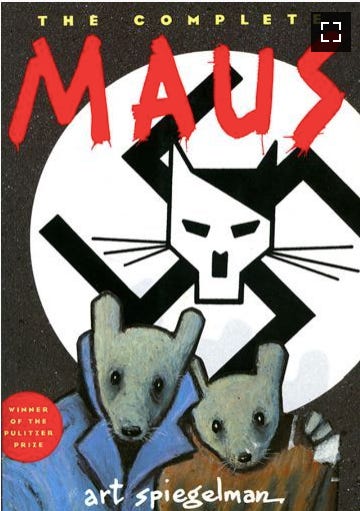
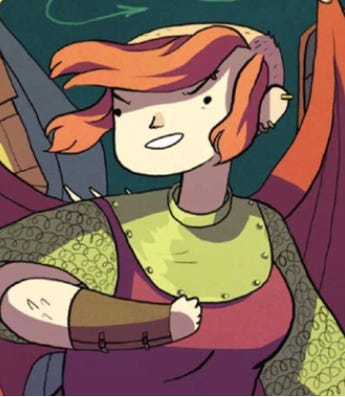
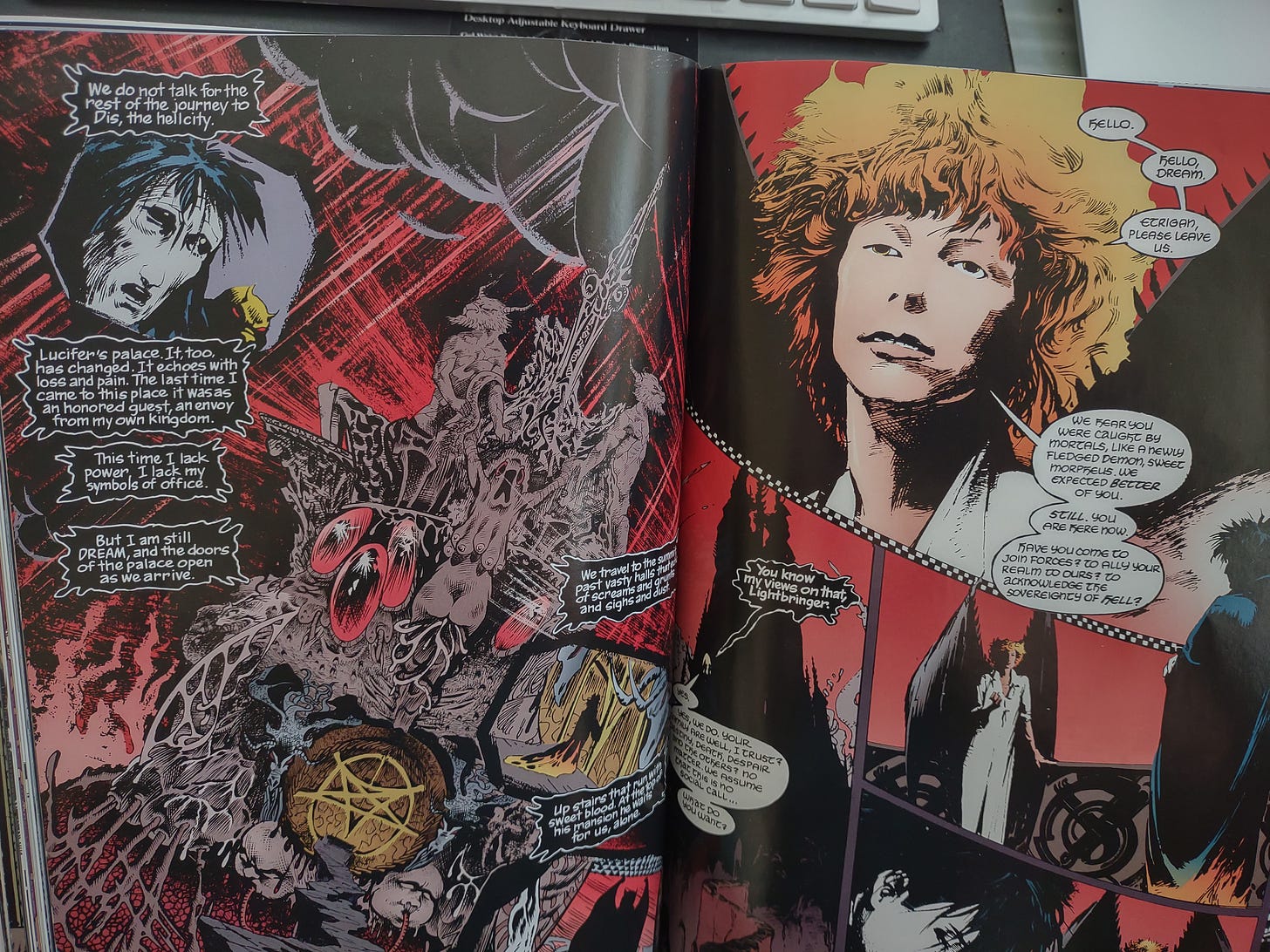
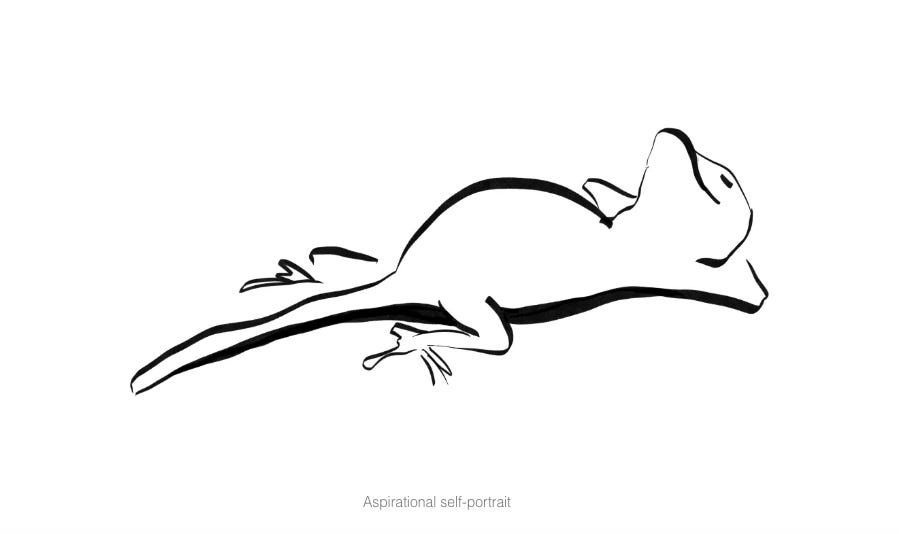

Wonderful piece, Betsy! My journey with pictures and words has been similar, and these recommendations of classics like Marjane Satrapi are so inspiring.
Thanks for taking us into the world of graphic novels & memoir, Betsy. Have loved Roz Chast all those years of dedicated The New Yorker reading. My favorite graphic memoir (so far) is Alison Bechdel's "Fun Home." Also loved the musical created from it. Oh, all the ways we can express ourselves, including you in Spark.